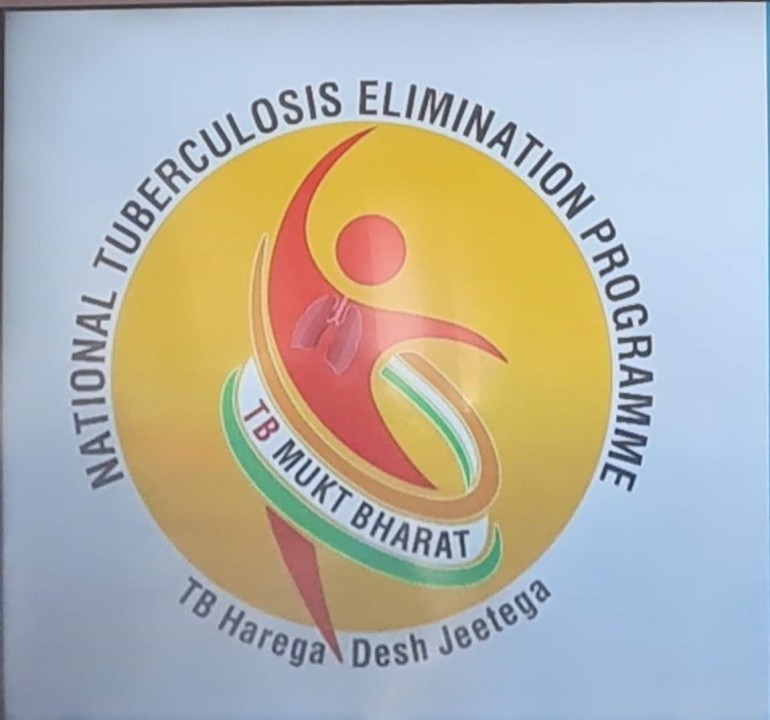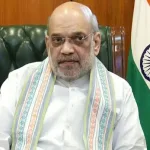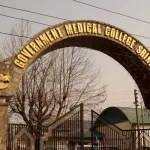Tuberculosis (TB) has long been a major public health concern across the world, particularly in countries like India, where the burden of the disease remains high. Despite the global effort to combat this infectious disease, it continues to pose a significant challenge, and efforts to eliminate it remain a top priority for the Government of India. To tackle this, the government has introduced several initiatives over the years, among which the “Nikshay Shivir” has emerged as one of the most impactful and far-reaching campaigns for TB elimination. This 100-day intensified campaign is a critical part of India’s strategy to eliminate TB and its burden from the country by the year 2025. In Kashmir, the initiative holds great promise, and efforts have been made to bring together the community, healthcare providers, and government and non-government agencies, ultimately creating a multi-faceted approach to eliminate TB from Kashmir.
India is the global leader in terms of the TB burden, with nearly a quarter of the world’s TB cases. Nationally, the incidence rate is about 195 cases per lakh population, significantly higher than in Kashmir, where the incidence is below 50 cases per lakh population in most districts, including Srinagar. Even in the Kashmir Valley, where Srinagar is a healthcare hub due to its tertiary care hospitals and advanced private healthcare facilities, around 1,400 cases are diagnosed and notified annually. This number is nearly three times higher than the actual number from Srinagar District itself, which is under 500 because of cases from other districts and even States and UTs are diagnosed and even treated here.
Moreover, in many cases, the notified number of cases may be higher, especially due to the phenomenon of duplication in case notifications. This happens when individuals, after receiving a TB diagnosis, seek second opinions or retests in other facilities, often under different names or contact details, leading to duplicate entries in the health system. To curb this issue, the government of India is in process of mandating Aadhaar-based identification to ensure accurate tracking and prevent duplication in notifications.
There appears to be confusion surrounding the concepts of TB elimination and eradication, with some medical professionals and journalists mistakenly believing that the Department of Health is claiming TB eradication in certain districts of Kashmir. This issue was highlighted in the article “TB Still Persists in J&K” by Zehru Nissa, published in Greater Kashmir on December 18, 2024, in which an anonymous pulmonologist was quoted. While the terms “elimination” and “eradication” may sound similar, they have distinct meanings, particularly within the context of public health.
Eradication refers to the permanent global reduction of TB to zero incidence, meaning the disease would no longer exist anywhere on the planet. While this is a long-term global objective, achieving eradication is challenging in the short term, especially given the high incidence of TB in neighboring countries. On the other hand, TB elimination means reducing the incidence of TB in a specific region or country to a level where it is no longer a public health concern. The programmatic operational definition for TB elimination is when the incidence of TB falls below 44 cases per lakh population, at which point the disease is no longer a significant threat to public health in that particular geographic area. Most districts in Kashmir, including Srinagar, are nearly reaching this operational target, putting them in a strong position to eliminate TB. In fact, some districts such as Budgam, Anantnag, and Pulwama have already reached this milestone.
It is important to understand these definitions to manage expectations. While TB eradication remains a long-term global goal, elimination is a more achievable and realistic objective for regions like Kashmir. Thus, initiatives like the Nikshay Shivir focus on TB elimination, aiming for the reduction of TB incidence to a point where it no longer poses a major health risk.
The Nikshay Shivir, launched by the Ministry of Health and Family Welfare, is a key component of India’s broader strategy to eliminate TB by 2025. It is a focused 100-day intensified campaign aimed at early detection, treatment, and prevention of TB. The Nikshay Shivir campaign is an integral part of India’s commitment to achieving the goal of a TB-free India by 2025.
The success of the Nikshay Shivir campaign relies on active case finding—the process of identifying TB cases through outreach and targeted screenings. In Kashmir, the Department of Health Services has expanded its focus to include high-risk populations such as elderly individuals, smokers, diabetics, people living in congregate settings, and those who have had close contact with TB patients diagnosed in the past five years. Additionally, people who are immunocompromised, underweight, alcoholics or suffer from other chronic diseases are also targeted in the screening efforts.
More importantly the aim is to increase awareness among the population regarding TB symptoms, the importance of early diagnosis, the availability of treatment, and the government’s nutritional and other support interventions. In an effort to ensure early detection, vulnerable populations are being mapped, and a proactive approach is being adopted for screening and testing in these high-burden areas.
To increase the effectiveness of the Nikshay Shivir campaign, various high-sensitivity diagnostic tools are being employed. These include traditional methods like X-rays and the Nucleic Acid Amplification Test (NAAT), which can accurately detect TB in a matter of hours. Moreover, innovative new tools such as the cough app, which uses symptoms like the type of cough to predict potential TB, have been introduced to enhance case detection.
The campaign follows a three-pronged screening approach
- Screening 100% of the identified vulnerable populations through active case finding in communities.
- Screening 100% of individuals attending specialized OPDs, such as those for HIV, non-communicable diseases (NCDs), tobacco cessation clinics, cancer centers, and dialysis units.
- Screening at least 10% of adult patients in general OPDs in community health centers (CHCs), sub-district hospitals (SDHs), district hospitals (DHs), and medical colleges, and 5% in Primary Health Centers (PHCs) and similar urban primary care settings.
A key element of the Nikshay Shivir campaign is Janbagidari—community participation. The success of TB elimination efforts depends not only on healthcare professionals and government institutions but also on the active involvement of local communities, NGOs and other stakeholders at all levels. This approach involves mobilizing local leaders, NGOs, and voluntary organizations to raise awareness, educate the public, and provide direct support to those affected by TB.
At the national level, elected representatives such as MPs, along with ministries like Health and Panchayat Raj, play a crucial role in advocating for policy changes, securing funding, and driving awareness campaigns. At the state and district levels, the involvement of local officials like MLAs, district collectors, and medical officers is essential for coordinating screening efforts, ensuring timely treatment, and ensuring that TB control measures are implemented effectively.
At the village level, Gram Panchayats, Self Help Groups (SHGs), and Ayushman Arogya Mandirs are actively involved in raising awareness, providing care, and supporting TB patients with nutritional interventions. These community-driven efforts are crucial for building trust, ensuring better health outcomes, and fostering a sense of collective responsibility toward TB elimination.
The success of Nikshay Shivir is also reliant on collaboration with various sectors and organizations. The campaign actively engages corporate partners, trade unions, market associations, and private healthcare providers. These stakeholders help with spreading awareness, providing financial and nutritional support to TB patients, and ensuring the availability of healthcare services for workers in industries and other sectors prone to TB exposure. For example, the campaign organizes TB screening camps for workers in mining industries and corporate sectors, provides nutritional support to TB patients through corporate partnerships, and conducts awareness programs through trade unions and market associations. This collaboration enhances the reach of the campaign and strengthens its effectiveness.
As the campaign continues to evolve, with more tools, better diagnostics, and increased awareness, Kashmir’s healthcare system is poised to take a giant leap forward in the battle against TB. By leveraging the power of community participation, advanced screening techniques, and collaborative efforts, the region can create a healthier, TB-free future for its citizens and set a benchmark for other parts of India to follow.
(The author is Public Health Specialist and is presently working as District Tuberculosis Officer Srinagar and can be reached at: [email protected])








